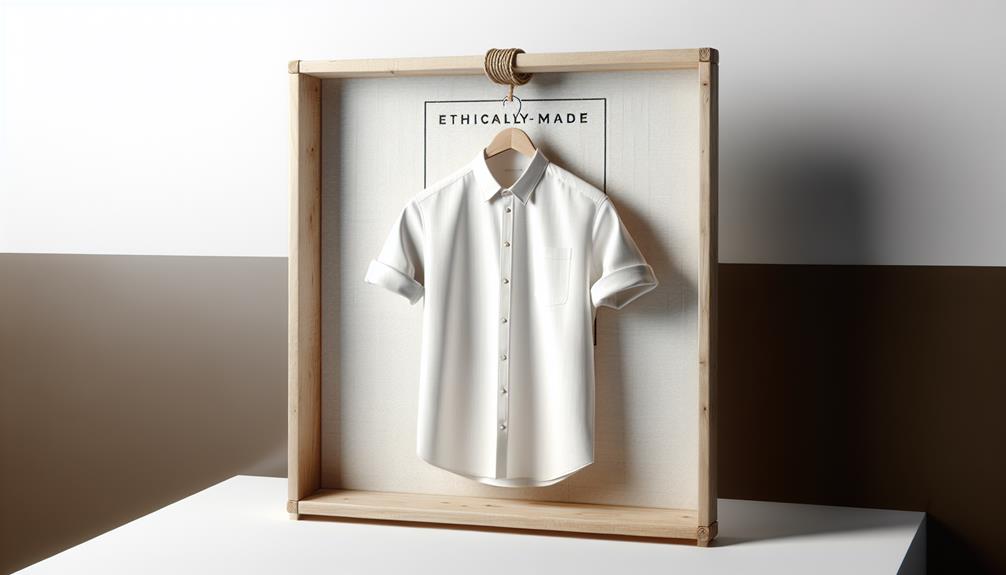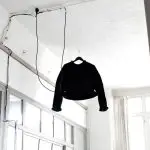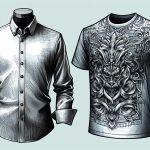When it comes to the cost of a shirt, have you ever wondered why some are priced as low as a fast-food meal while others can break the bank?
The price tag on a shirt can reveal a lot more than just its material and stitching. Join me as we unravel the complexities behind pricing shirts and discover the intricate dance between value and affordability that shapes our perception of a fair price.
Table of Contents
Key Takeaways
- Material quality and production costs determine shirt pricing.
- Branding and perceived value influence shirt costs.
- Customization and personalization affect pricing strategies.
- Market trends and competition guide optimal pricing decisions.
Factors Affecting Shirt Costs
When determining the cost of a shirt, various factors come into play, influencing the final price customers pay. Understanding the average cost of production is key in pricing your T-shirts effectively.
Raw materials like threads, buttons, and fabric can range from $1.50 to $3.59 per shirt. Labor costs for design, cutting, and sewing typically add $0.19 to $2.10 per shirt. Overhead expenses, including rent and machinery maintenance, can contribute an additional $0.29 to $1.12 to each shirt's production cost.
Marketing costs are also significant, amounting to $5.39 to $6.00 per shirt. It's essential to consider these aspects when deciding how to price your shirts to ensure you cover all production costs while remaining competitive in the market.
Material Quality and Pricing
Discussing the impact of material quality on pricing, it's evident that the choice of fabrics and threads significantly influences the cost of a shirt. Premium materials like organic cotton or sustainable fibers can drive up the cost of making a shirt, impacting its average price point. When consumers opt for shirts made with high-quality materials, they often find that the initial investment pays off in terms of durability and comfort. These shirts may come at a higher price point, but the value they offer in terms of softness, breathability, and longevity is often worth it. On the other hand, lower-priced shirts may cut corners on material quality, which can affect the overall value customers receive. Below is a table highlighting the relationship between material quality and pricing:
| Quality of Materials | Cost of Making | Average Price |
|---|---|---|
| Premium | Higher | Higher |
| Lower | Lower | Lower |
Labor Costs in Shirt Production
So, let's talk about labor costs in shirt production. These costs can really impact how much a shirt ends up costing to make.
From wage rates to analyzing manufacturing expenses, understanding labor costs is key to figuring out the total cost breakdown.
Wage Rates Impact
Labor costs play a pivotal role in determining the overall production expenses of a shirt, with factors like design intricacy and sewing demands influencing the range from $0.19 to $2.10 per shirt. Understanding how wage rates impact labor costs is crucial in analyzing the final pricing structure. The table below illustrates how geographical location can influence labor costs in shirt production:
| Geographical Location | Average Labor Cost per Shirt |
|---|---|
| Developed Countries | $2.10 |
| Developing Countries | $0.85 |
| Low-Income Countries | $0.19 |
Geographical location plays a significant role in determining the wage rates, affecting the overall production expenses. By considering these factors, businesses can make informed decisions on pricing strategies and cost management.
Manufacturing Expenses Analysis
In analyzing the manufacturing expenses for shirt production, it's essential to consider the varying labor costs influenced by factors like design complexity and geographical location. Labor costs for producing shirts can range from $0.19 to $2.10 per shirt, depending on the intricacy of the design and the expertise required.
When pricing your t-shirts, keep in mind the following:
- Skilled labor significantly impacts the cost per shirt, as experienced workers command higher wages.
- Tasks such as shirt design, cutting, and sewing contribute to the overall labor expenses in manufacturing.
- Efficient management of labor costs is crucial for optimizing production expenses.
- Labor expenses, alongside material costs and overhead expenditures, are key components in determining the final price of the shirts.
Impact of Branding on Pricing
So, let's talk about how branding plays a crucial role in the pricing of shirts.
It's fascinating how brand recognition can directly impact the cost of a shirt.
The perceived value, driven by branding, can sway the pricing game significantly.
Brand Recognition Drives Pricing
Brand recognition heavily influences the pricing of shirts. This influence often leads to higher costs due to consumer perceptions of well-known brands. When consumers recognize a brand, they often associate it with quality, style, and status, making them more willing to pay a premium price.
The efforts invested by established brands in marketing and branding help create a premium image, justifying the higher prices they charge. Strategies like celebrity endorsements or limited edition releases further enhance a brand's perceived value, allowing for increased pricing.
The reputation and resonance of a brand with its target audience are vital in setting and justifying the pricing levels of shirts.
Perceived Value Influences Cost
Moving from the influence of brand recognition on shirt pricing, let's now explore how the perceived value directly impacts the cost of a shirt. Branding is a powerful tool that can shape how consumers view a shirt, influencing their willingness to pay a higher price.
When a brand is associated with quality, style, or exclusivity, customers are often willing to pay more for the perceived value it offers. As a result, pricing strategies are heavily influenced by the branding efforts put forth by companies.
Premium and luxury brands, in particular, use branding to establish themselves as prestigious and desirable, allowing them to set higher prices for their shirts. Ultimately, the perceived value created through branding plays a pivotal role in determining the cost of a shirt.
Marketing Strategies Affect Prices
When considering the impact of branding on pricing, it becomes evident that marketing strategies play a crucial role in determining the cost of shirts. Here are some key points to consider:
- Branding can influence the cost per shirt, impacting the final retail price.
- Well-known brands with higher marketing expenses often charge premium prices.
- Customer perception of quality and exclusivity is shaped by branding efforts.
- Effective marketing strategies, like advertising and supply chain management, contribute to pricing decisions.
Branding isn't just about logos and slogans; it directly affects how much you pay for that shirt on the rack.
Distribution and Retail Markup
Discussing the distribution and retail markup of shirts sheds light on how pricing is calculated in the apparel industry. Retail markup plays a significant role, with t-shirts often being marked up by 2.2 to 2.5 times their production cost. This means that if a shirt costs $10 to make, it may be sold to consumers for $22 to $25. Distribution costs, which encompass expenses like shipping and handling, can further increase the retail price by 15-20%. Wholesale prices are vital for retailers, as they typically purchase shirts at 50-60% of the final retail price.
Understanding these factors helps explain why shirts are priced the way they're on store shelves. Brands that sell directly to consumers may offer lower prices since they bypass intermediaries. However, various other elements such as brand positioning, market demand, and perceived value also influence the final price tag. By considering these aspects, one can better comprehend the intricacies behind the cost of a shirt in today's market.
Environmental and Ethical Considerations
Considering the impact of our clothing choices goes beyond just the price tag; it involves environmental and ethical considerations that shape the apparel industry. When it comes to the cost of a shirt, it's essential to think about the materials used, the treatment of workers, and the values upheld by the brands we support.
Here are some crucial points to ponder:
- Sustainable Materials: Opting for shirts made from sustainable materials like organic cotton or recycled fibers can reduce the environmental footprint of the garment.
- Fair Wages: Supporting brands that ensure fair wages and safe working conditions for their employees promotes social justice within the fashion industry.
- Ethical Clothing Brands: Choosing to buy from ethical clothing brands that prioritize transparency in their supply chains and adhere to fair trade practices can make a positive impact.
- Consumer Responsibility: As consumers, we've the power to drive change by supporting companies that align with our values of sustainability and ethical production practices.
Customization and Personalization Costs
Let's move on to exploring the additional costs involved in customizing and personalizing a shirt to suit individual preferences and styles. When it comes to custom T-shirts, customization costs can vary depending on the complexity of the design. Adding features like multiple ink colors or intricate designs on both the front and back of the shirt may incur an extra $2 to $5 per shirt.
Moreover, personalization expenses are influenced by the level of customization desired. Special requests, such as custom tags or labels for brand legitimacy, can enhance the shirt but might tack on additional production costs.
Tailoring shirts to meet specific preferences through personalization could raise the final cost per shirt. Factors like embroidery, unique printing techniques, or bespoke design services contribute to higher customization costs. Therefore, individuals looking to create a truly unique garment should consider these additional expenses in their budgeting process.
Pricing Strategies for Shirt Manufacturers
Shirt manufacturers strategically price their products by carefully analyzing production costs, determining competitive retail prices, and leveraging market trends to optimize profitability.
When it comes to setting the price tag on a shirt, several key strategies come into play:
- Consider all shirt costs: From materials to labor and overhead expenses, every aspect of production impacts the final price of a shirt.
- Factor in profit margins: Determining the right balance between covering costs and making a profit is crucial for a successful pricing strategy.
- Utilize pricing tools: Tools like the T-Shirt Pricing Calculator can help in setting prices that align with desired profit margins.
- Stay updated on market trends: By analyzing market trends and competitors' pricing strategies, manufacturers can adjust their prices strategically to stay competitive.
Economic Factors Influencing Shirt Prices
So, let's break down the economic factors that really play a role in how much you shell out for that shirt.
First off, it's all about the good old game of supply and demand – if the demand outweighs the supply, prices can climb.
Next up, we've got production costs; from materials to labor, every penny adds up to the final price tag.
Supply and Demand
When considering shirt prices, it's crucial to understand how supply and demand dynamics directly influence the cost of a shirt in the market.
- High demand for a particular shirt can elevate its price, especially with limited supply.
- Conversely, low demand may prompt price reductions to boost sales.
- Economic factors such as production costs, labor expenses, and consumer purchasing power also play a role in determining shirt pricing.
- Balancing supply and demand is essential for setting competitive and profitable prices.
Production Costs
Amid the intricate web of factors influencing shirt prices, the backbone of the cost structure lies in the production expenses involved. When we break down the production costs per shirt, we can see that raw materials typically range from $1.50 to $3.59, labor costs vary between $0.19 to $2.10, overhead expenses add around $0.29 to $1.12, and marketing and distribution costs contribute $5.39 to $6.00. These figures give us a clearer picture of the total cost involved in bringing a shirt to the market. It's not just about the materials and labor; there are other hidden costs like quality control and regulatory compliance that are crucial in determining the final price tag of a shirt.
| Production Costs | Low Cost | High Cost |
|---|---|---|
| Raw Materials | $1.50 | $3.59 |
| Labor | $0.19 | $2.10 |
| Overhead | $0.29 | $1.12 |
| Marketing | $5.39 | $6.00 |
Competition in Market
As we explore the realm of shirt prices, the competitive landscape of the market heavily influences the economic factors at play. When it comes to pricing t-shirts, the competition in the market can lead to fluctuations in the cost per unit. Here are some key points to consider:
- Competing brands and market demand can sway the price of shirts.
- Pricing strategies often pivot to match competitors' prices and market trends.
- Brand reputation, quality, and exclusivity can impact the final price of a shirt.
- Consumer preferences and trends play a significant role in determining the retail price of shirts.
Understanding the competitive dynamics in the market is crucial for both shirt manufacturers and consumers to navigate the pricing landscape effectively.
Pricing Comparison Across Shirt Categories
In exploring the pricing differences across various shirt categories, it becomes evident that the range can vary significantly based on factors like brand, quality, and design features. Basic t-shirts generally fall within the $10 to $30 range, depending on the brand and material used.
Moving up the ladder, designer or premium t-shirts can cost anywhere from $50 to $200 or more, especially if they boast exclusivity and unique designs. Customized t-shirts, offering personalized features, often come with higher price tags due to the added value of individuality.
When it comes to luxury brands like Gucci or Burberry, prices can soar, starting at $400 and beyond, emphasizing the prestige and status associated with these labels. Each shirt category caters to different consumer segments, with luxury brands commanding significantly higher prices compared to online t-shirt retailers or companies specializing in custom t-shirts, where profit margins play a crucial role in determining pricing strategies.
Price Optimization for Shirt Retailers
Navigating the dynamic shirt retail landscape involves strategically optimizing prices to maximize profitability and appeal to customers' preferences. When determining the cost of a t-shirt and how to sell it online, it's crucial to consider various factors.
Here are some key strategies for price optimization in the shirt retail industry:
- Utilize a T-Shirt Pricing Calculator: Use this tool to calculate the retail price based on your desired profit margin, ensuring that you set a competitive yet profitable selling price.
- Adjust Profit Margin Percentage: Experiment with different profit margins to find the sweet spot that attracts customers while maximizing your earnings.
- Incorporate Cost Calculations: Factor in all expenses, including production, shipping, and overhead costs, to set a price that covers these expenses while still being attractive to buyers.
- Implement Pricing Tactics: Appeal to customers' emotions by using psychological pricing strategies, such as charm pricing or bundling deals, to optimize sales and increase profitability.
Frequently Asked Questions
What's the Average Price of a Shirt?
I'd say the average price of a shirt really depends on factors like brand, quality, and design. It can range from $10 to $30 for basic ones, but designer shirts might go up to $200 or more.
Is $30 a Lot for a Shirt?
$30 for a shirt might seem steep, but factors like quality, brand, and design can justify the price. It's all about perceived value. To me, a $30 shirt offers quality and style.
How Much Is a Good Tshirt Worth?
For me, a good t-shirt is worth the price tag if it's comfy, durable, and suits my style. Whether it's a basic tee or a designer piece, I prioritize quality over cost. The right shirt is priceless.
How Much Profit Should I Make per Shirt?
Personally, I aim for a profit margin of 50-60% per shirt. Balancing quality and affordability helps sustain my business. Understanding market dynamics guides my pricing strategy. It's crucial to adapt to trends for long-term success.
- Why Is Red Velvet Not Red? - April 25, 2024
- How Do You Describe Velvet Fabric? - April 25, 2024
- How Strong Is Velvet? - April 25, 2024






